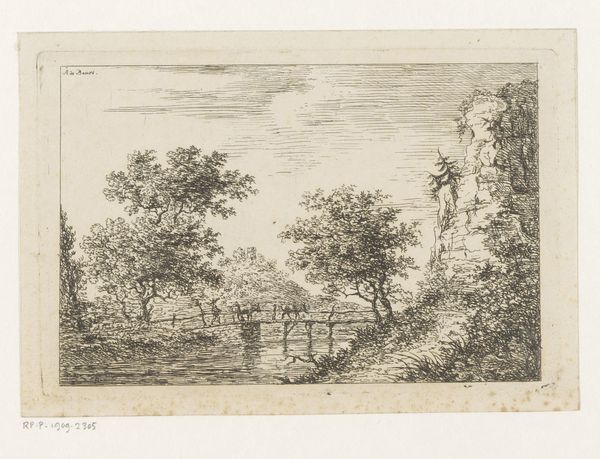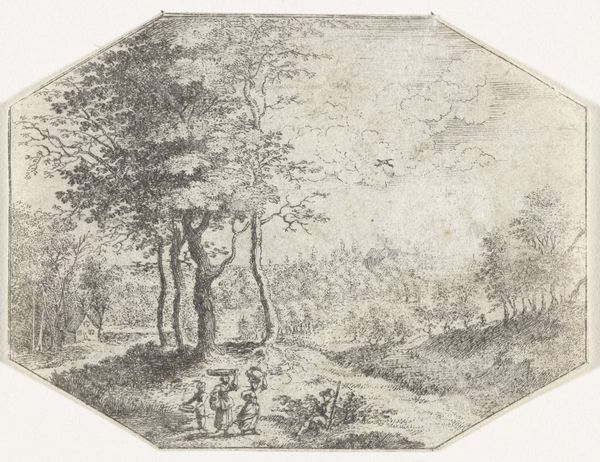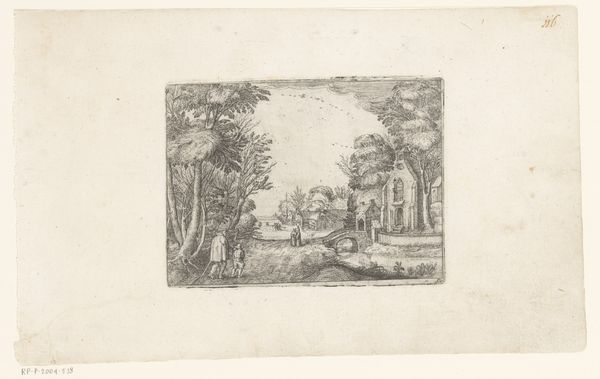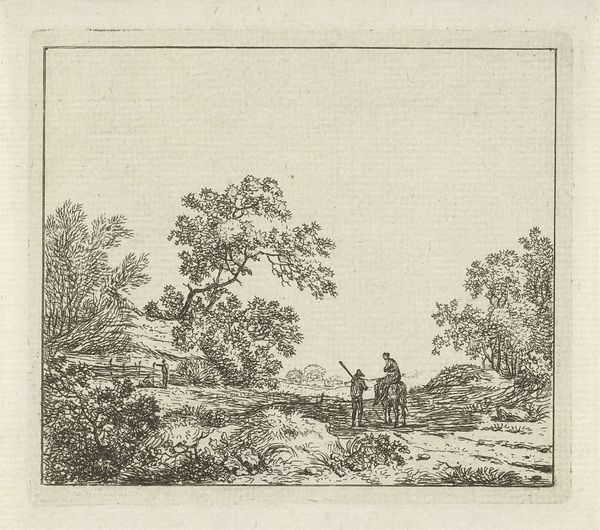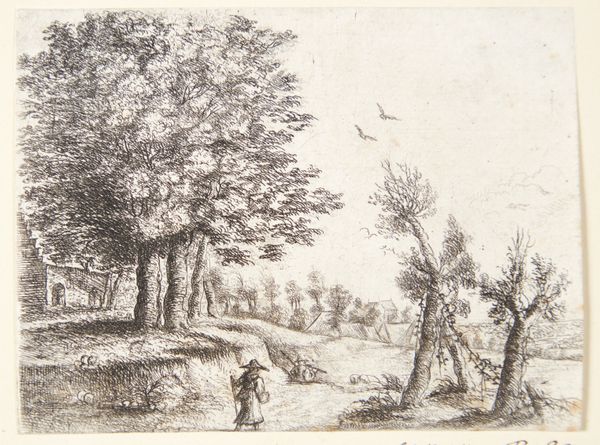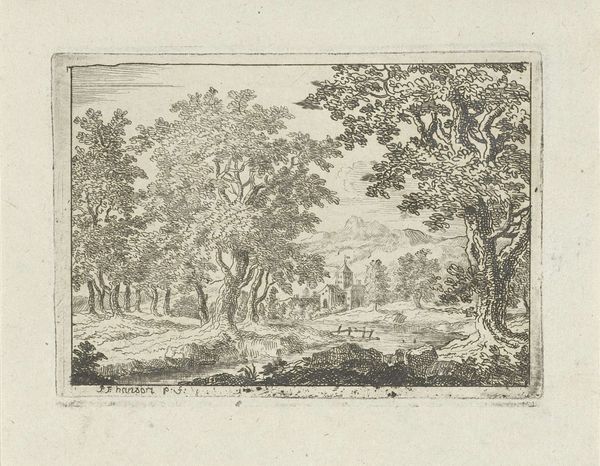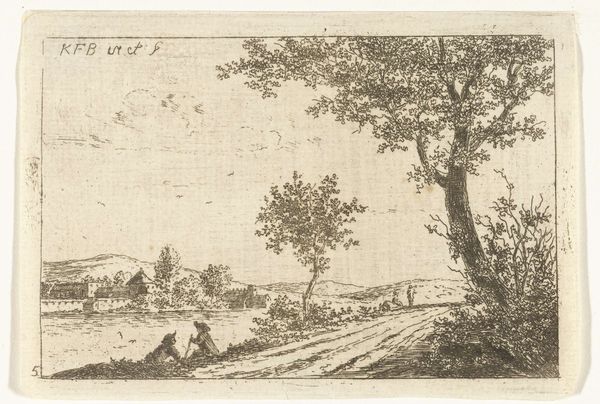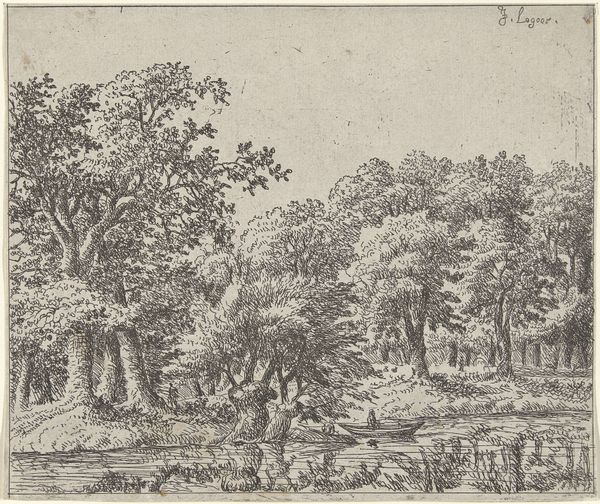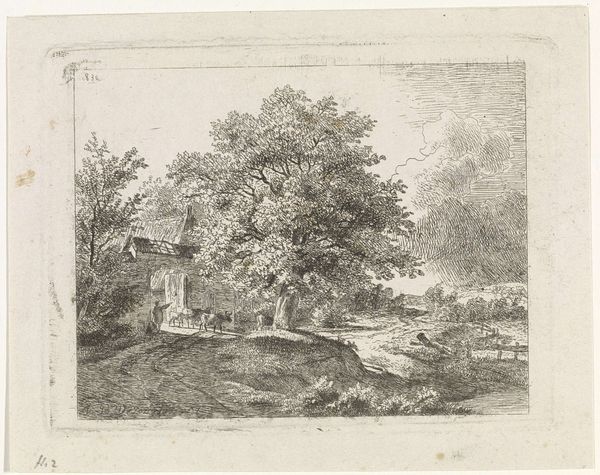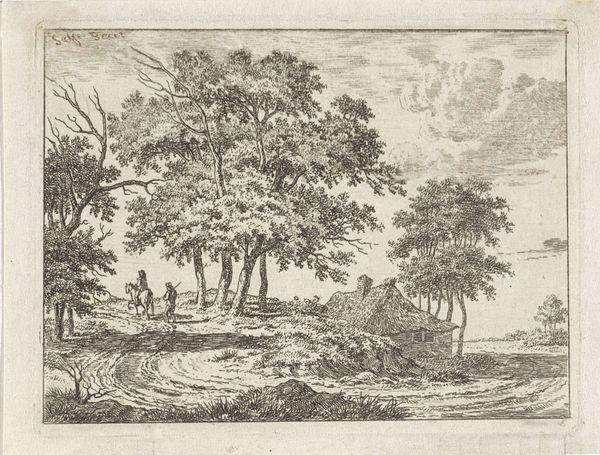
#
pencil drawn
#
aged paper
#
light pencil work
#
ink paper printed
#
pencil sketch
#
old engraving style
#
etching
#
personal sketchbook
#
pen-ink sketch
#
pencil work
Dimensions: height 84 mm, width 106 mm
Copyright: Rijks Museum: Open Domain
Curator: Here we have a scene titled "Landschap met vier figuren" at the Rijksmuseum. It's catalogued as having been created sometime between 1610 and 1668 by an anonymous artist. Editor: It strikes me as melancholic, perhaps even desolate. The composition, with its receding landscape and rather diminutive figures, amplifies that feeling. Is it an etching? Curator: Yes, it's an etching, demonstrating incredible skill in using line to create depth and texture on paper. The old engraving style also gives the picture a dreamlike quality. Editor: I'm interested in this "old engraving style," the physical act of pressing the plate, inking, and printing it. What sort of labor might have been involved in this process, given the materials at the artist's disposal? How readily available would the required inks or tools even have been? Curator: Etchings like these speak volumes, quite literally, as prints allowed for the wide dissemination of ideas. The symbol here seems rooted in labor itself, particularly within the figures traveling through the natural landscape. They aren't dominant or glorious; they simply *are*, integrated into a continuous whole. Editor: But is it integration or subjugation? Their backs seem laden, almost stooped under burdens unseen by the distant buildings or flying birds. I also find this decorative octagonal frame it’s displayed within to be interesting; this could very well represent societal limitations. Curator: A thought-provoking interpretation, considering the historical context of that era. The relationship between the landscape, the working figures, and even the seemingly whimsical birds is full of visual cues! Editor: Ultimately, such simple materials as etched lines on aged paper serve to depict larger dynamics between humanity and nature. One imagines this process being quite a hands-on method, far removed from today's mass production, and reflecting the cultural memories contained therein. Curator: A powerful synthesis between the act of creation, social context, and enduring themes of landscape, labor, and individual place—leaving one feeling pensive long after viewing the work. Editor: Indeed; from this material exploration emerges symbolic weight and timeless questions regarding man’s place.
Comments
No comments
Be the first to comment and join the conversation on the ultimate creative platform.
